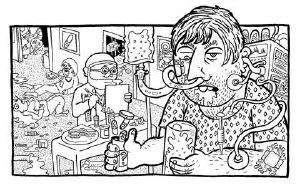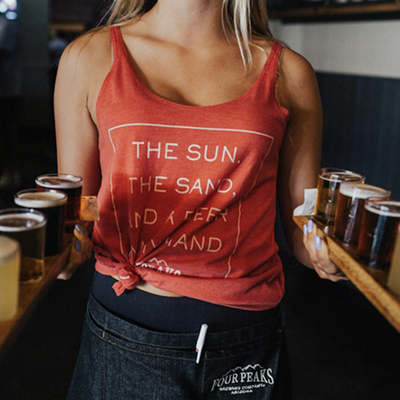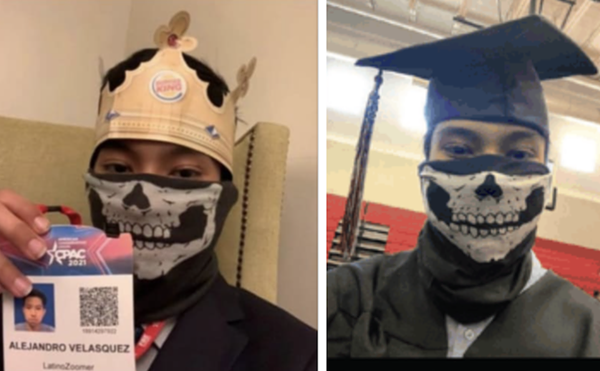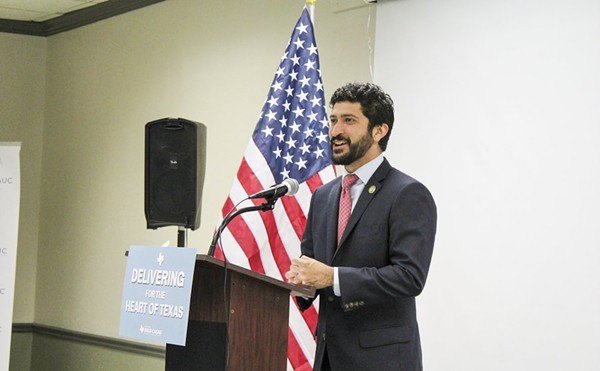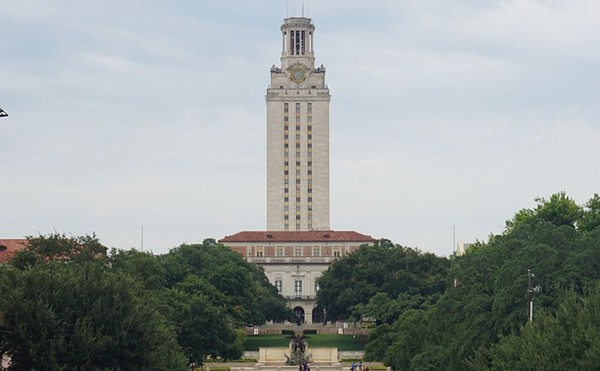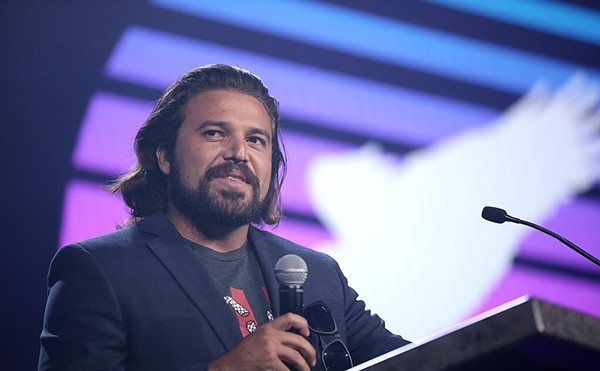Things could have been worse. Looking around the crowded room, I noticed two “subjects” (our official title) lying on the ground in attempts to keep from passing out. Another, his face devoid of color, looked like he was either an albino or had just surpassed Martin Mull to become the whitest man in America. They were experiencing what study professionals call adverse reactions, AEs, (nearly always) minor, short-term physical and psychological responses to the study medication — or, in some cases, to the sight of blood.
This was my introduction to the drug-fueled, multi-billion-dollar world of pharmaceutical studies. If you have ever wondered how drug companies discover that their products can cause “symptoms that may include abdominal cramps,
|
“I am going to have a BOOB JOB. After that I’ll do one or two more to earn money to pay for Lasik surgery. ” — CHERYL, TEST SUBJECT |
Dedicated study centers started a couple decades ago. “There were lots of changes in the ’80s,” says Buddy Worrell, vice president of business development for Cedra, an international pharmaceutical testing company with local operations. “The major pharmaceutical manufacturers realized they had a lot of bricks and mortars and bodies lying around that were underutilized.” Worrell adds that “CROs `clinical research organizations`, such as Cedra, sold the big companies on the idea that they could better handle the subject-testing aspect of their business; thus, a new industry was born.” These CROs, which include PPD in Austin and others with local facilities, such as Radiant and Healthcare Discoveries, are highly organized human-blood-processing factories. With an aging and longer-living population that will need an ever-increasing number of chemical cures, their economic futures look bright.
Finding subjects is an endless task. All of the centers run ads in local publications (including the Current) and are always looking for “new blood.” The initial, or “Phase 1” studies, also known as “1st in human” studies, require between 24 and 52 participants. Some of the later-phase studies utilize hundreds or even thousands of participants, requiring a constant subject influx.
For the professional subject there are endless opportunities. A website at Gpgp.net (which stands for “Guinea Pigs Get Paid”) displays a list of centers, matching the volunteer with studies around the world.
Although there are some risks to study participation, industry reps say it is safe. Project Manager Laurene Tardo of Healthcare Discoveries comments that “There are a lot of safeguards in place, including institutional review boards and the FDA, both of which closely monitor studies.”
Sean, a frequent subject and athletic-looking college student from San Antonio, scoffs at the risks involved. “There are people who smoke cigarettes, don’t exercise, `they’re` alcoholics, they get messed up daily,” he says. “Popping a pill under highly controlled circumstances isn’t risky … They’re the ones taking extreme health risks.”
Worrell agrees. “Studies are closely monitored … if you see something you don’t like, you stop it.” According to him, this occurs in about 5 percent of studies. “Hell, for 10 years of my life I put all kinds of unknown chemicals in my body without a single concern and never had problems, not even a headache,” says Charley, a study veteran. “These guys at the center watch everything and are prepared for anything that might come up.”
Long-term risks, however, cannot be calculated until the drug has been on the market a while. Not long ago, Vioxx, a popular pain and arthritis medication, was voluntarily withdrawn by Merck Corporation due to an increased risk of stroke and heart attack after chronic use (defined as 18 months or more). Study participants generally take the medication for as few as a couple of days to as long as a month or more, so long-term effects cannot be easily determined.
Despite the somewhat carefree attitude of many participants, warnings are plentiful. The IntegReview Ethical Review Board, required by the FDA, creates multi-page documents that include an informed consent form that lists possible side effects. An example of this form states that physical reactions to a particular diabetes drug may include, but are not limited to, abdominal pain, constipation, nausea, and abnormal liver function, as well as 10 different generic side effects from having blood drawn. It would be fair to assume in our liability-conscious culture that companies, in trying to limit legal exposure, will overstate the risks involved so that no one can later argue that they weren’t informed about a potential danger.
Participants often joke that they feel like human guinea pigs. In truth, however, a wealth of information is gleaned through the study of other species well before the first human is medicated. Tardo says “The FDA requires strict study protocols, particularly with Phase-1 studies, the ones normally performed by the major research companies.”
Surprisingly, neither real guinea pigs nor apes, which share 98 percent of the gene pool with humans, are tested. In Phase I studies, Worrell says, humans are tested after lengthy trial-and-error animal testing. He explains the process: “When a company starts testing a new compound, we first use lab rats; then we move on to rabbits; next, we use a breed-specific dog; and finally, assuming everything goes as expected up until this point, we begin to test people.”
Why would anyone consider being a part of a study? There are risks, sure, but there are also many tangible and intangible rewards.
Although subjects are called volunteers, they are generally paid about $125-175 per day for in-patient studies, dependent upon the drug being tested and testing conditions. This can potentially add up to several thousand dollars for a long-term study.
The financial motivations are as complex and diverse as the subjects themselves.
Some participate to escape poverty. George, who lives in Houston, was living in a shelter when he first heard about pharmaceutical studies. “I was referred to a study by a Texas Workforce counselor, and haven’t looked back since,” he says. “So far, I’ve participated in 13 `studies`, testing everything from pain, arthritis, and blood-dpressure medication — you name it.”
Others, like Cheryl, a 40ish divorcee, use the money for “self-improvement”:
“I have big plans for the money I’ll earn during this study,” she says. “I am going to have a boob job. After that, I’ll do one or two more to earn money to pay for LASIK surgery.”
Still other subjects simply seek refuge from the harsh work world. Stephen, a 26-year-old Austinite, describes his lack of viable employment options:
“There are a lot of dead-end jobs out there,” he says. ”The money I earn here gives me a chance to buy time so that I don’t have to work where I don’t want to.”
George says he also has a spiritual reason for participating. “I operate a storefront church called the Flame of Fire ministries in Houston,” he says. “The money I earn here helps me to spread the word by building my church.”
The intangible reasons are also important for some subjects. The study centers try to promote the fact that subjects are helping to make the world a healthier place by volunteering to test drugs. Mary Jane Garza, an Austin art teacher and writer, shares this motivation. “I’m doing my part to help people get the medicines they need,” she says. “I have diabetic friends, and in some way, this could help them.”
Another perk is the amount of free time permitted during the study. Medication, blood draws, and checkups take relatively little time, permitting ambitious subjects to use the free time wisely, or the unambitious to just hang out and watch TV. Sean loves the free time. “This is a great place to study because there are so few distractions,” he says. “`There’s` nothing productive to do except study.” “Jane,” an Austin homemaker, concurs. “I feel at peace while I’m here. No screaming and demanding kids, no housework, none of the obligations of being a wife and mother.” She smiles and adds: “This is like a vacation from my problems.”
Several days after completing the study, I received a check in the mail for about $1,000. As if by magic, I completely forgot about the minor discomforts experienced during the study and began focusing on where I would spend this newfound wealth. And who knows? Maybe I did make the world a little better just by participating.

